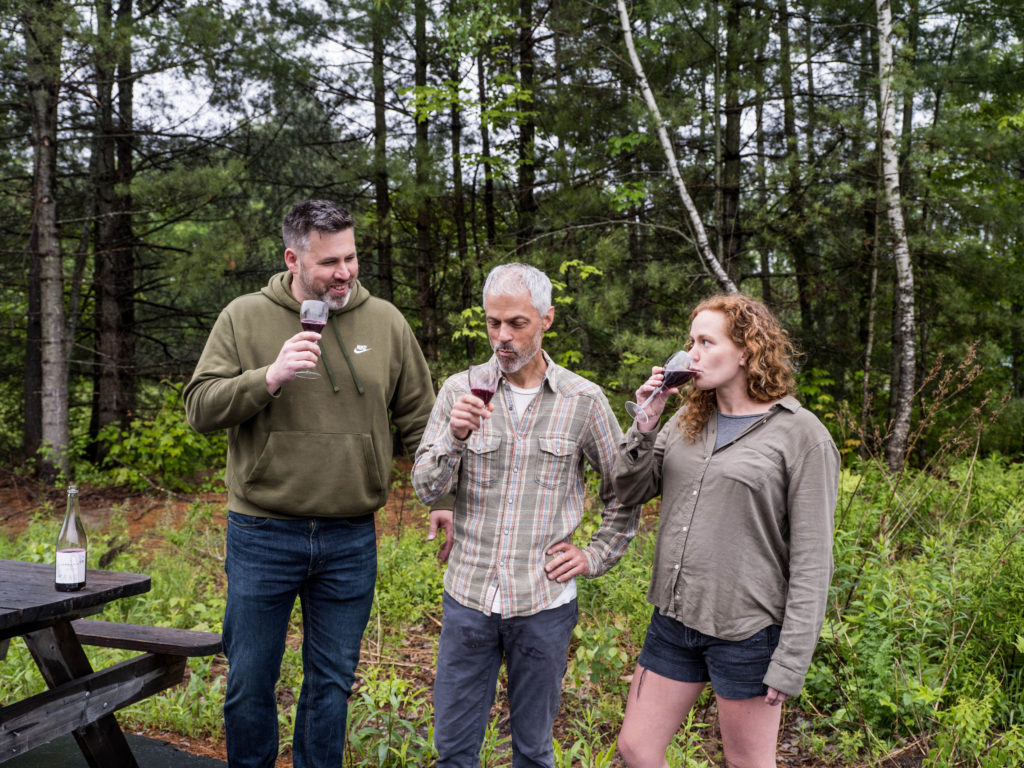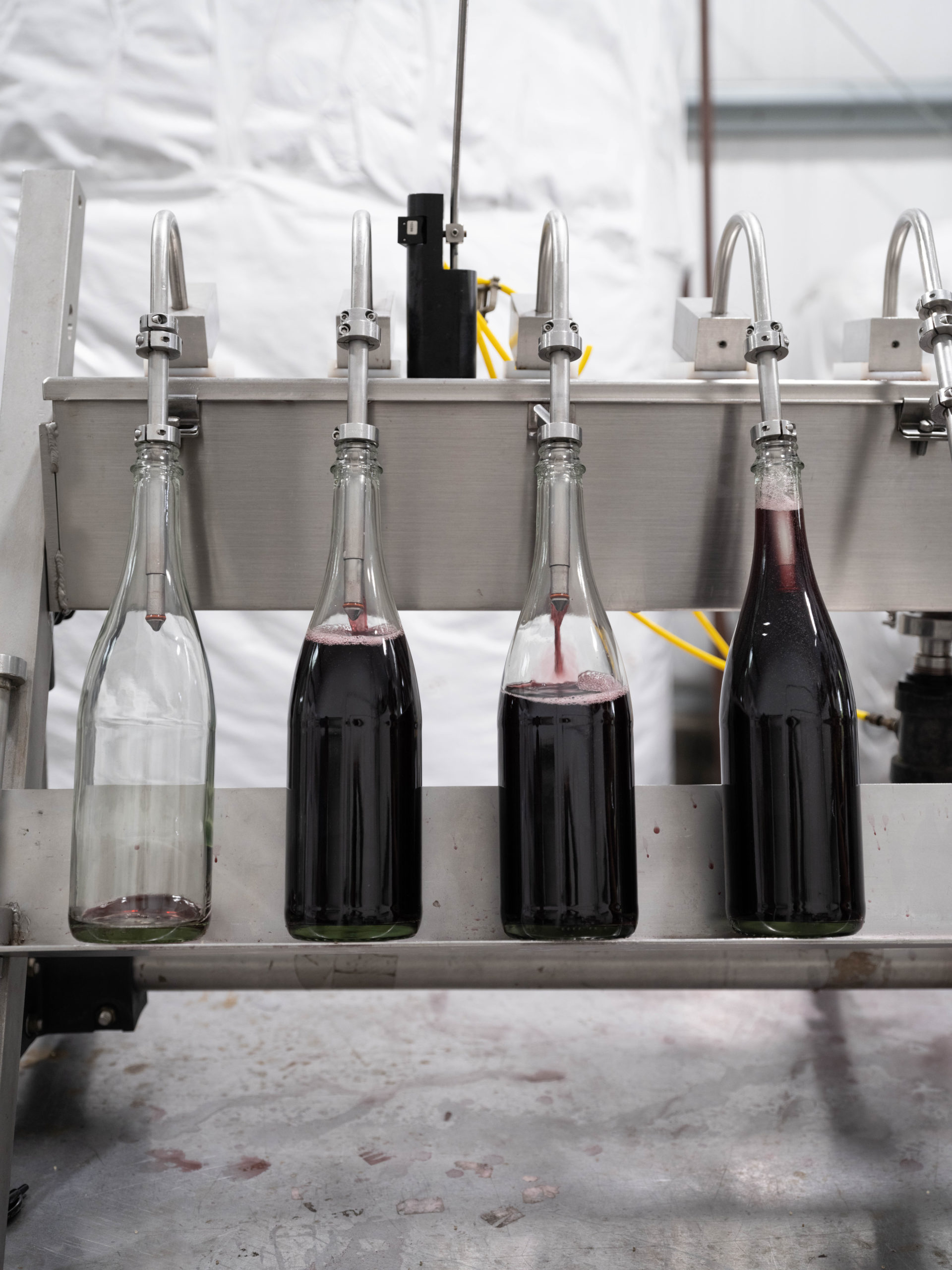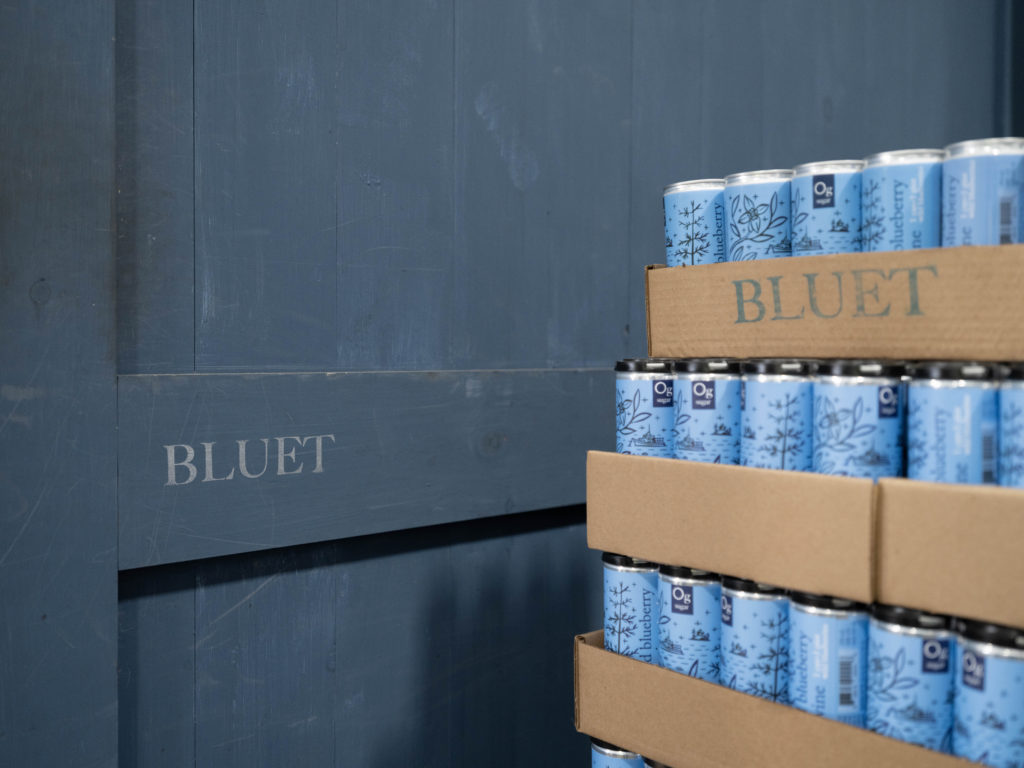Wild Blueberry Wine is Becoming Maine’s Hot New Commodity
More than just a snacking fruit, in recent years Maine’s wild blueberry has come into its own as a valued ingredient for wine making.

Every summer from July to September, rural Maine’s miles and miles of wild blueberry barrens turn a distinct deep red and blue. Often called the low-bush blueberry, Maine’s wild blueberry is different from the common blueberry in size, flavor, and territory, having adapted specifically to the barrens left by glaciers that receded from the area 10,000 years ago. Wild blueberries are more than just sweet: there’s tartness, complex earthiness, and a concentration of flavor that sets them apart from the common blueberry; they are also generally much smaller in size and range in color from bright blue to almost black. Stewarded by Native Wabanaki people for many generations, the fruit has a history that runs deep in our glacial sandy soils, but today’s blueberry growers walk a difficult path.
Wyman’s, Allen’s, and other processors purchase over 99 percent of the wild blueberries grown in the state. Farmers send their fruit to the processors, and in turn the processors tell the farmers how much they’ll pay for the fruit. Since growers are not able to set their own prices, and processors can choose to take as little or as much fruit as they like, there’s not much opportunity for the people cultivating the fruit to take hold of their business. With blueberry prices diving, thanks in part to competition from Canada, profits aren’t looking good, and many growers are grappling with a tough decision: do they continue in this business or try their luck in a different industry altogether?

blueberries from the midcoast and downeast regions per bottle.

More than just a snacking fruit, in recent years Maine’s wild blueberry has come into its own as a valued ingredient for wine making. With so much access to local blueberries, why plant grapes at all? Wineries like Bluet in Scarborough, RAS in Portland, and Oyster River Winegrowers in Warren are paving the way for an industry that is on the brink of explosive growth. Purchasing the fruit directly from growers, these wineries pay more on the dollar than any of the current processors, who pay between 20 cents and one dollar per pound. “The industry itself doesn’t offer a very financially stable reality for the farmers,” says RAS winemaker Emily Smith. “Opening up a value-added product like wild blueberry wine is a perfect avenue for growers because we buy tons of fruit fresh at a price that is higher than frozen, giving them a better revenue stream. It’s an additional revenue stream as well, because frozen will always be an alternative.”
Blueberry farmers are helping winemakers, too. With global temperatures rising and sustainability becoming paramount, burgeoning winemakers must decide whether grapes are the most responsible fruit to be working with. Wild blueberries are native to our soils, they don’t require irrigation, and many blueberry growers choose not to spray pesticides or chemical fungicides, opting for organic farming methods instead. “Because of the changes in the climate and the world around us, we somehow struck on something that is becoming necessary to work on—different beverages, different wines that are sustainable and that have the opportunity to be around for a long time,” says RAS winemaker Dan Roche. “It’s there—why not utilize it? We feel pretty lucky that we got in when we did.”


The wines themselves are incredibly versatile, with many different flavor profiles, although dry and sparkling tends to be the style choice of local makers. Deeper, full bodied wild blueberry wines, like Oyster River Winegrowers’ “The Ewing Project,” a dry and slightly effervescent wine made with fruit grown down the road from their winery in Warren, is bold and fruit forward. Bluet’s champagne-style sparkling wine is fruity, earthy, beautifully fizzy, and pairs well with food. Their canned wine is especially appealing as a summer beverage—fresh, dry, crisp, and perfect with a lobster roll or sipped on board a sailboat. RAS’s Arkadia is a joyful sparkler made with 100 percent organic wild blueberries. The three-person team also makes a stellar blueberry-based vermouth, A7 Americano.
There can be between 10 and 100 subvarieties of wild blueberries in a single field, which ferment together to showcase the local terroir in the final product. “Because it’s a native fruit, the terroir conversation becomes central. That’s something that consumers and winemakers are both very tied into,” says Ed Lutjens, assistant winemaker at Bluet. “We think it’s a great fit.”



The wild blueberry wine industry is just getting started, but the more winemakers (and beer brewers) use the fruit, the more local growers get paid and the longer the culture can survive and thrive. Wineries like Bluet are leading the charge, helping inspire more makers to start fermenting. “We’re trying to develop other winemakers to play with wild blueberries in the state of Maine and elsewhere, and encourage more people to buy blueberries in general,” says Lutjens.
As for buying the wines, you can be sure that you’re drinking a product that supports the local blueberry industry—and represents the local terroir. “I feel very much supported in our Maine community,” says Joe Appel, a winemaker at RAS. “I also have confidence saying, yes, this is a product that is truly representative of Maine.”

- 8 Low (or No) Alcohol Beverages That Got Me Through My Stomach Ulcer

- Allen’s Coffee Flavored Brandy is Maine’s Favorite Spirit

- 9 Creative Craft Coffees to Mix Up Your Morning

- The Ultimate Maine Bar Cart

- Portland’s Hottest Cocktail Bar Isn’t a Bar At All


